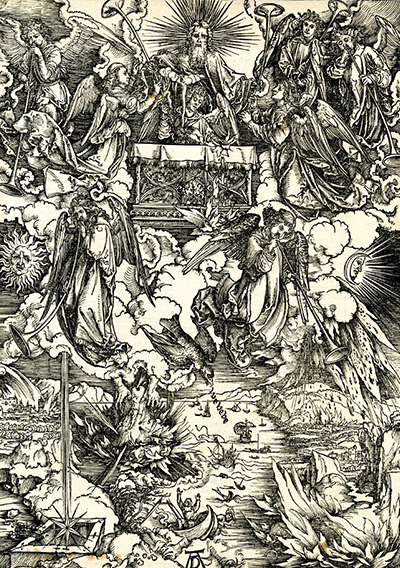A contemporary and correspondent with Leonardo Da Vinci, Rafael and Bellini, amongst others, Albrecht Durer was something of a man ahead of his time. While most art at the time was known for its once-in-a-lifetime splendours, woodcuts were a little different.
Durer's splendid drawings would have been created directly on the woodblock, or they would have been glued firmly in place, the original lines then being destroyed under the hands and tools of the high-skilled craftsmen employed to actually shape the blocks. However, once the block was satisfactorily produced, Durer was able to make as many copies as he liked – and he did like, taking small sheaves of his prints with him on his many travels which ranged the depth and breadth of Europe from his hometown, Nuremburg. Rarely for those days, Durer was a bit of a businessman, keeping records as to who he gave, sold or swapped the prints with – and how much money he made from each sale. His diaries provide the art world with one of very few records of the amounts and volumes of prints that were sold, and only the large solo commissions which commanded immense prices tended to be recorded, usually with a sense of awe.
This image, The Opening of the Seventh Seal and the Eagle Crying Woe, comes from Durer's famous Apocalypse series, a collection of fifteen or sixteen woodcut prints known collectively as Apocalypse with Pictures which Durer began, while travelling in Italy for the first time, in 1494 or 95, and was completed and published in around 1498, two years before, cautionary tales alleged, the Apocalypse would happen for real in 1500. The title and the image comes from the Bible's most surreal book, Revelation. This passage seems to reference the unwriting of the world as the scroll of heaven is unsealed (represented by Durer as a large chest, perhaps the better to show the seven seals, despite Revelation stating that it was a scroll with writing on both sides and sealed with seven seals!) while seven angels sound their trumpets, each trumpet blast causing devastation and destruction on earth.
In the midst of this, after four angels have blasted their horns, an eagle sounded a warning – crying 'Woe, woe, woe,' and cautioning the people below that the last three angels' blasts would be so much worse... Like all the images in the series, this one is delicately nuanced with a careful balance of light, dark and greyscale – only achieved with the most careful carving and delicate of touches – that was a marker of a genuine Durer carving – in his later years, he returned to the training he had received from his goldsmith namesake father, who had instructed him in the exacting art of using the burin, an etching and engraving tool that allowed for tremendous delicacy in carving. The woodcut can be seen in the Met Museum, where its small size might surprise a viewer: it is just over 6 inches by four inches!




